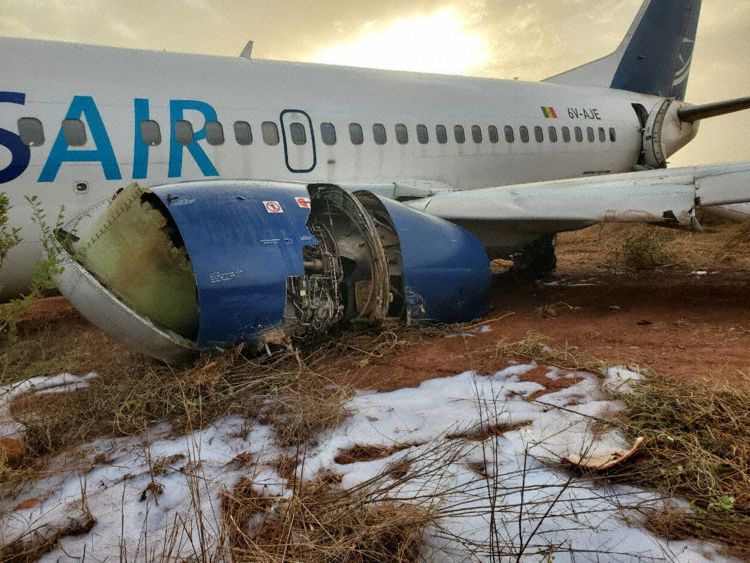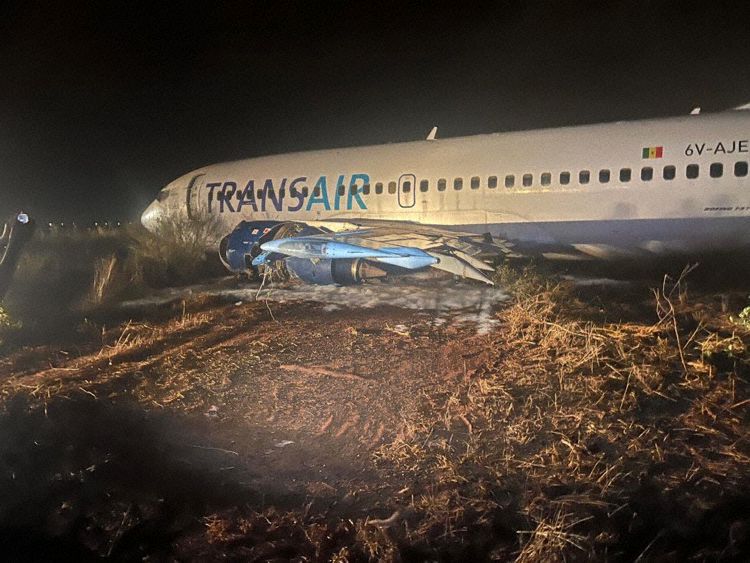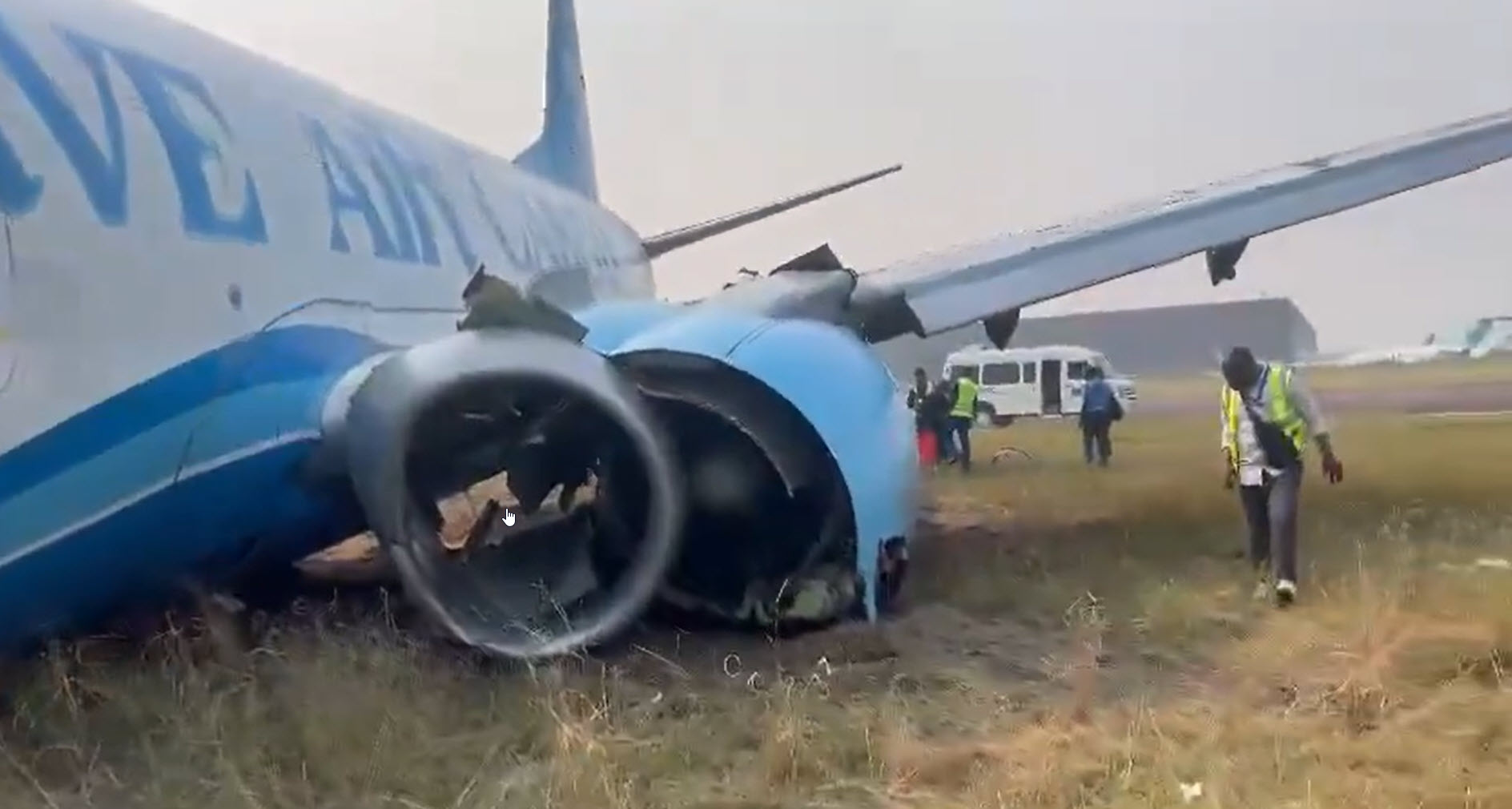Country
Crash of a Boeing 737-38J in Dakar
Date & Time:
May 9, 2024 at 0114 LT
Registration:
6V-AJE
Survivors:
Yes
Schedule:
Dakar - Bamako
MSN:
27182/2663
YOM:
1994
Flight number:
HC301
Crew on board:
6
Crew fatalities:
Pax on board:
79
Pax fatalities:
Other fatalities:
Total fatalities:
0
Circumstances:
While on a night take off from runway 01 at Dakar-Blaise Diagne Airport, the crew encountered hydraulic problems and decided to reject the takeoff procedure. Unable to stop within the remaining distance, the airplane overran, rolled into soft ground and came to rest. A fire broke out on the right side of the airplane and was quickly extinguished. All 85 occupants were evacuated, among them 10 were injured. The airplane was supposed to fly to Bamako on behalf of Air Sénégal.


Crash of a Boeing 737-3Y0 in Kinshasa
Date & Time:
May 5, 2024 at 1900 LT
Registration:
9S-AKK
Survivors:
Yes
MSN:
24916/2066
YOM:
1991
Crew on board:
2
Crew fatalities:
Pax on board:
0
Pax fatalities:
Other fatalities:
Total fatalities:
0
Circumstances:
On approach to Kinshasa-N'Djili Airport, at an altitude of 11,000 feet, the crew encountered technical problems with the left engine that was shut down. The crew continued the approach and was cleared to land on runway 24. After touchdown, the crew started the braking procedure and activated the right reverser when the airplane veered off runway to the right and came into soft ground. The nose gear collapsed and the airplane came to rest. There were no injuries among the occupants.



